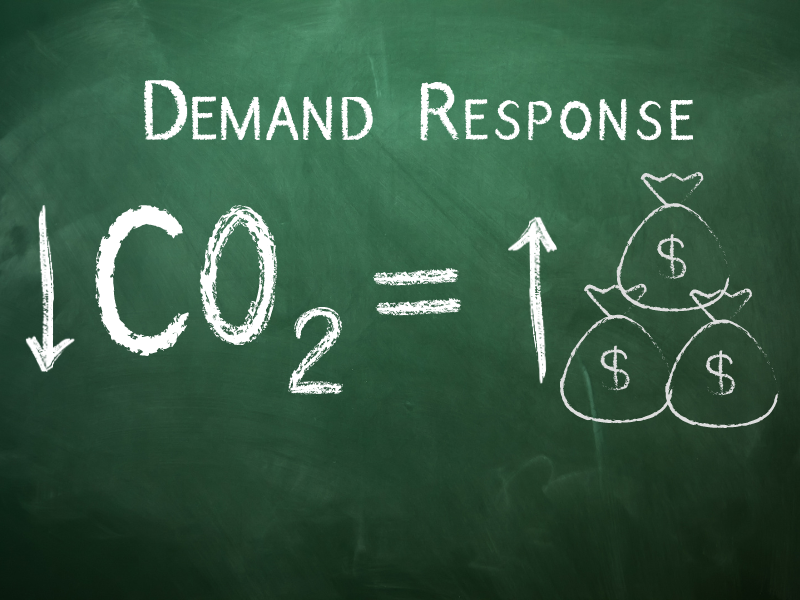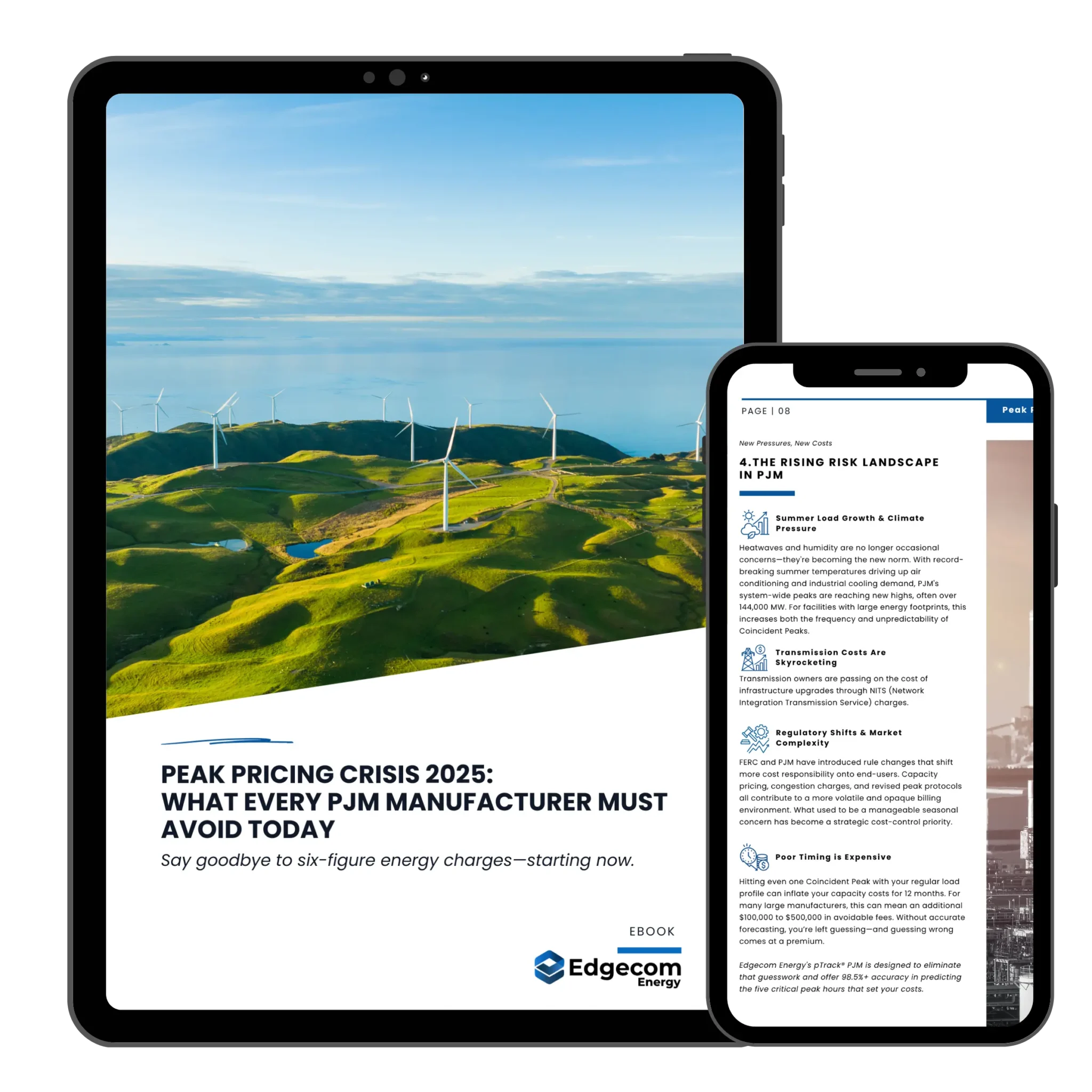Participating in Demand Response (DR) initiatives to improve sustainability is often overlooked, but it is an incredibly powerful tactic that facilities can use. In fact, it can be a very low-hanging fruit when it comes to boosting sustainability.
What is a Demand Response Program?
Demand Response programs are created to incentivize facilities to reduce their energy demands on the grid at certain times. This enables facilities to lower carbon emissions, increase overall energy efficiency, and earn revenue while supporting the grid.
Here are five ways facilities can increase their sustainability by participating in Demand Response programs.
1. Reduce Carbon Emissions
One of the most direct impacts of demand response is the reduction of your carbon emissions. When demand on the energy grid is high, power grids cannot rely on renewable energy sources and have to rely on carbon-intensive “peaking” power plants, which are run on fossil fuels. By shifting or reducing electricity use during these peak periods, demand response participants reduce the need for these power plants to ramp up production. This lowers the facility’s carbon footprint and helps the grid transition to cleaner, more sustainable energy sources.
2. Optimization of Energy Consumption
Demand response encourages facilities to examine how to optimize their energy consumption. When they participate in DR programs, they are financially incentivized to be more aware of when and how they use energy. There are several ways large facilities can implement energy-saving measures, such as modifying their HVAC systems (cooling ahead of time, then shutting off their HVAC), turning off unnecessary machinery, or even rescheduling production lines to run at off-peak hours. These steps contribute significantly to long-term energy consumption reductions and total facility energy efficiency improvements.
3. Support for Renewable Energy Integration
The increase in renewable energy sources presents opportunities and challenges for our energy grids. On one hand, we have less reliance on power production plants that need to use fossil fuels. On the other hand, renewables such as wind or solar can’t run 24/7. For example, we often see a peak demand period towards the end of the day when the sun goes down. Demand Response programs help to balance energy supply and demand because they encourage facilities to adjust their energy use to align with the times of day when renewable energy is more abundant.
4. Minimized Strain on the Grid
Thinking bigger picture, sustainability isn’t just about reducing a facility’s carbon footprint. It’s also about ensuring that our entire energy infrastructure remains stable and reliable. With a strong, resilient energy grid, we can better adapt to the challenges posed by climate change, such as extreme weather events.
5. Economic Resilience
Demand Response programs offer financial incentives for reducing energy consumption during peak times. In fact, they can become a new revenue stream for businesses that participate in the program. In Ontario, we see as much as $80,000 per MW paid to facilities by the IESO. The earnings from Demand Response can be used to invest in other sustainability initiatives, such as upgrading to more energy-efficient equipment or installing solar panels or battery storage. While facilities get paid just for participating, there are even more savings to be had by avoiding higher electricity prices and lowering overall energy costs.
Participating in demand response is both a smart financial decision and contributes to your organization’s sustainability goals. By reducing carbon emissions, optimizing energy consumption, and minimizing strain on the grid, facilities can play a crucial role in creating a more sustainable energy future. As businesses look to lower their environmental impact and increase operational efficiency, demand response programs offer a practical, impactful solution to support these objectives.
This proactive approach to energy management enables companies to reduce their environmental footprint while simultaneously driving operational efficiency and cost savings—making sustainability a win-win for both the planet and the business.

